When it comes to DJI, it's no longer just a question of drones. The company, in fact, seems to have also specialized in portable video cameras, and in particular in those mounted on gimbals. Today on trial DJI Pocket 2, which is proposed as a complete steady-cam option for vloggers and occasional filmmakers, who love to shoot on the go.
The name of the product already highlights the path that the brand has taken for some time with the elimination of the “Osmo” prefix, removed from its consumer-level products such as the DJI OM Mobile 4 smartphone gimbal. peripheral simply takes the name of DJI Pocket 2, unlike its predecessor, which was called DJI Osmo Pocket instead. However, the basic idea remains unchanged compared to the past: Pocket 2 is, essentially, a stabilized camera with gimbal, positioned on a stick that can be held in the hand, complete with a monitor to view what is being filmed.
While a description like this might bring to mind a large peripheral, the DJI Pocket 2 turns out to be really small. We only realized how small it was after holding it.
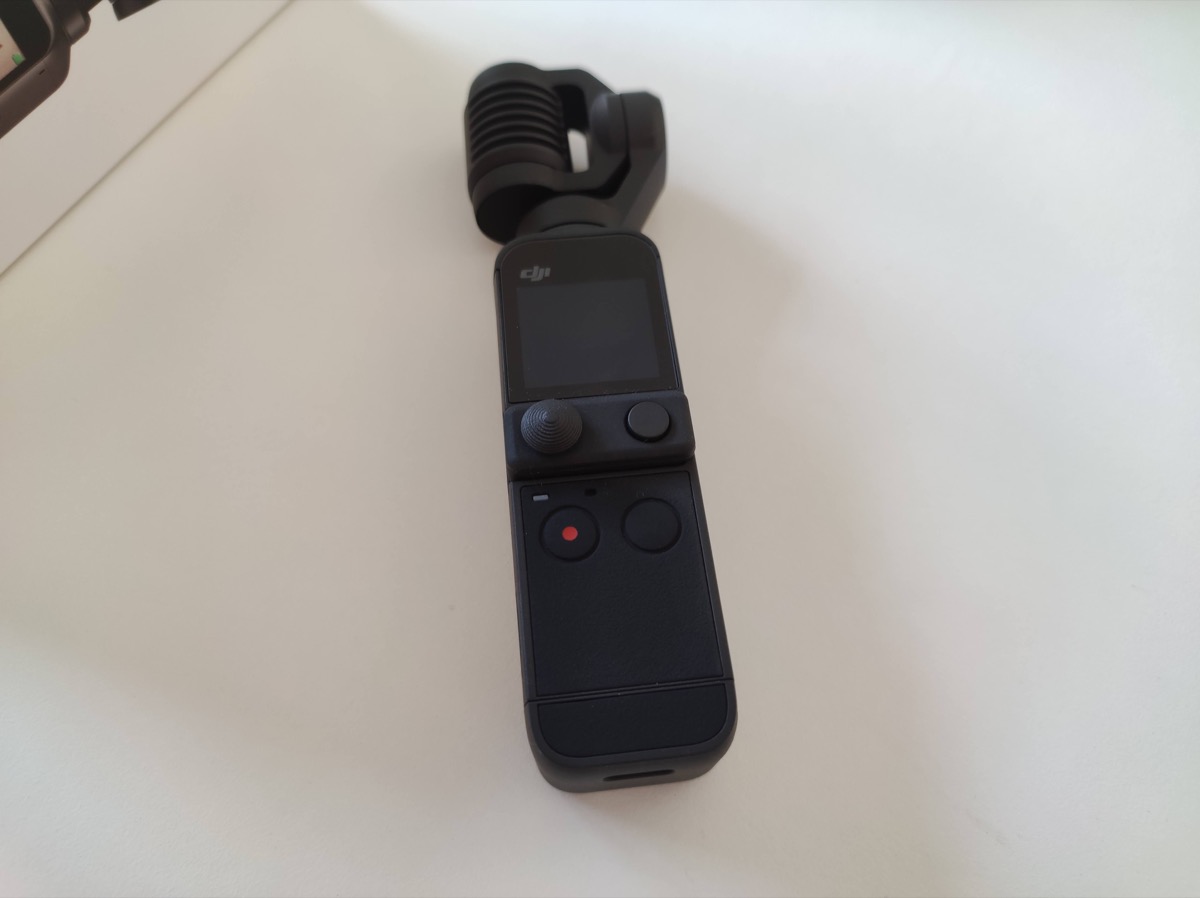 Technical characteristics
Technical characteristics
DJI Pocket 2 incorporates a 64MP camera, a big increase over the 12MP found on the original DJI Osmo Pocket. The previous 1 / 2.3-inch sensor of Osmo Pocket has also been improved, as this second model offers one 1 / 1.7 inch , therefore much larger, and certainly able to return better images. 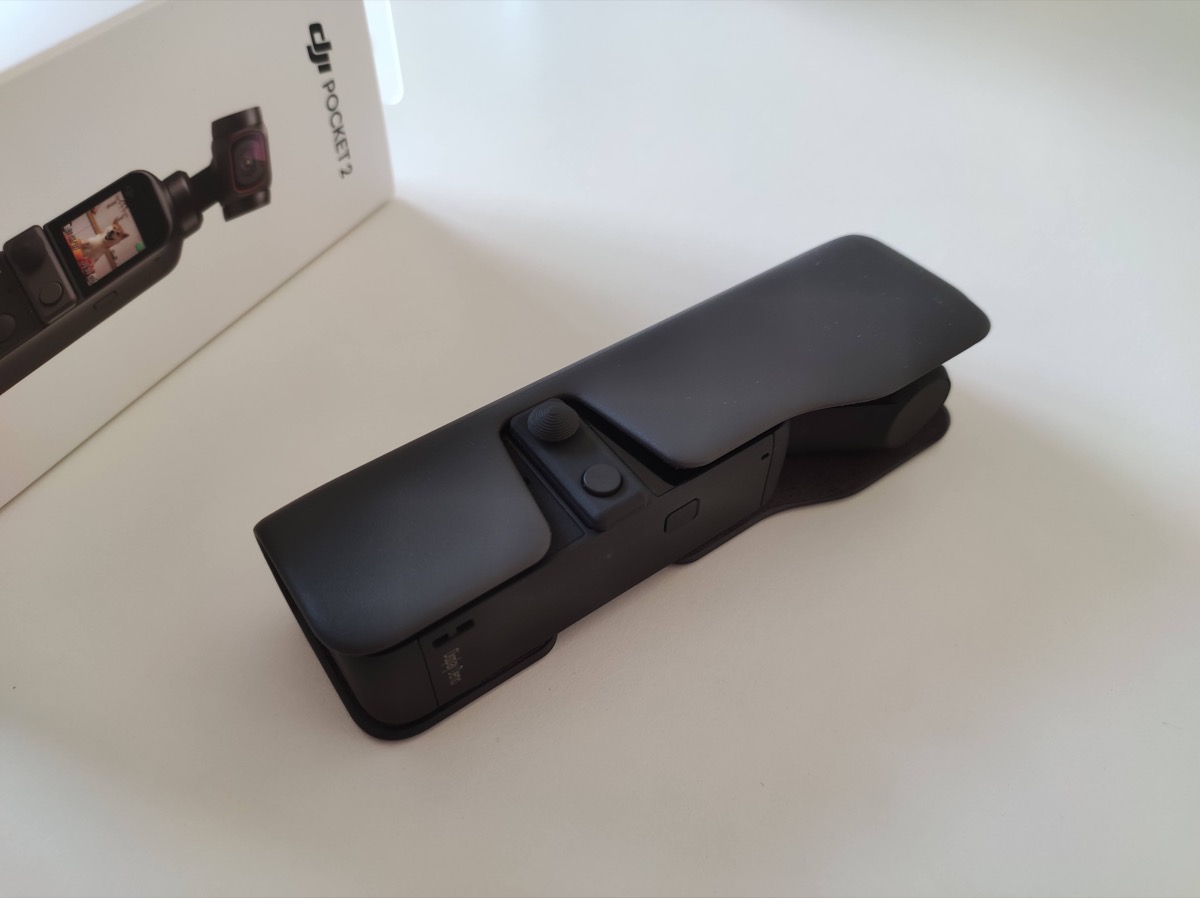
DJI Pocket 2 offers a 93-degree field of view (FOV), with a focal length of 26mm (f / 2.0) to 20mm (f / 1.8 ). In this way, the device is even better for vlogging, which is one of the uses that we imagine will be more frequent for those who buy this camera. 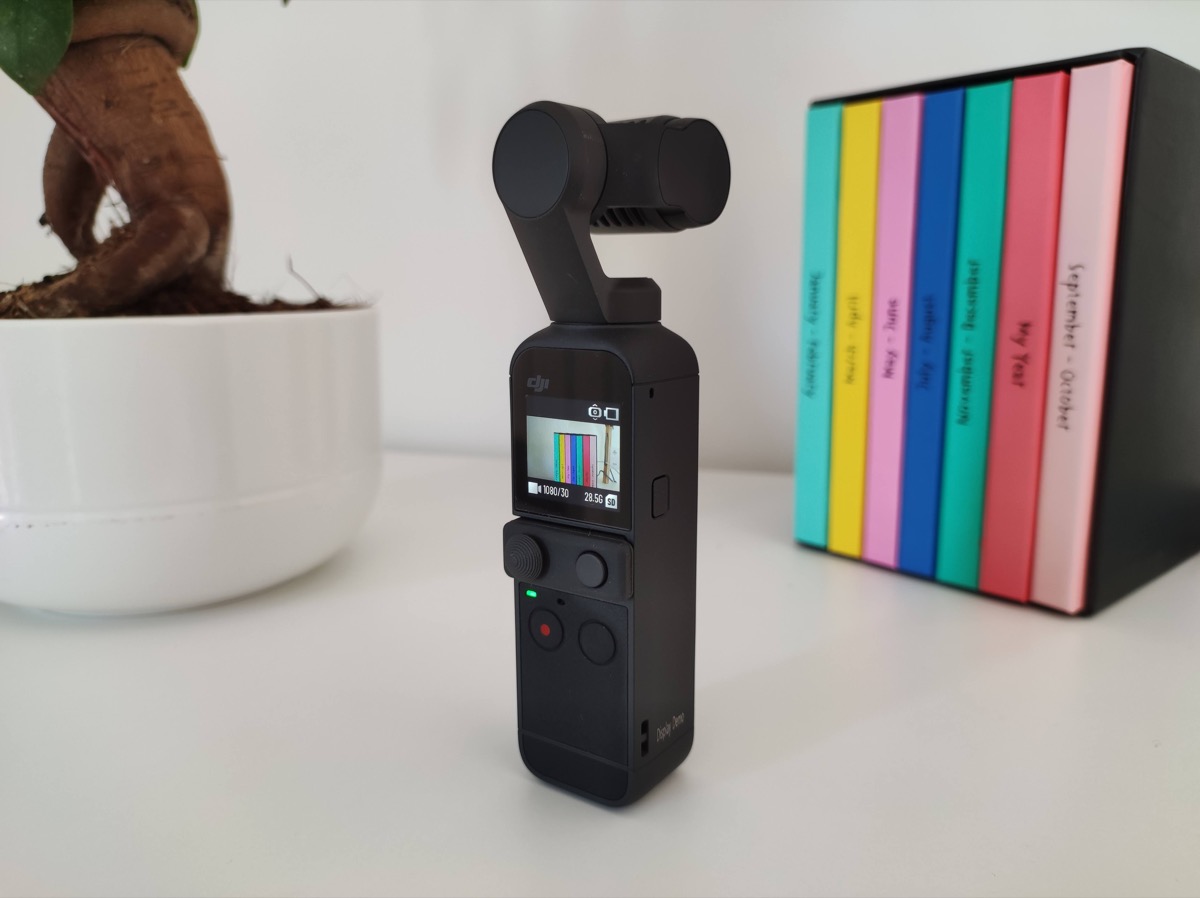
DJI Pocket 2 is equipped with a 3-axis gimbal . Just below, the 1-inch display, for a total weight of just 117 grams , therefore very light and comfortable to hold. This is a peripheral that will certainly not tire your hand, even if you use it for long shots. 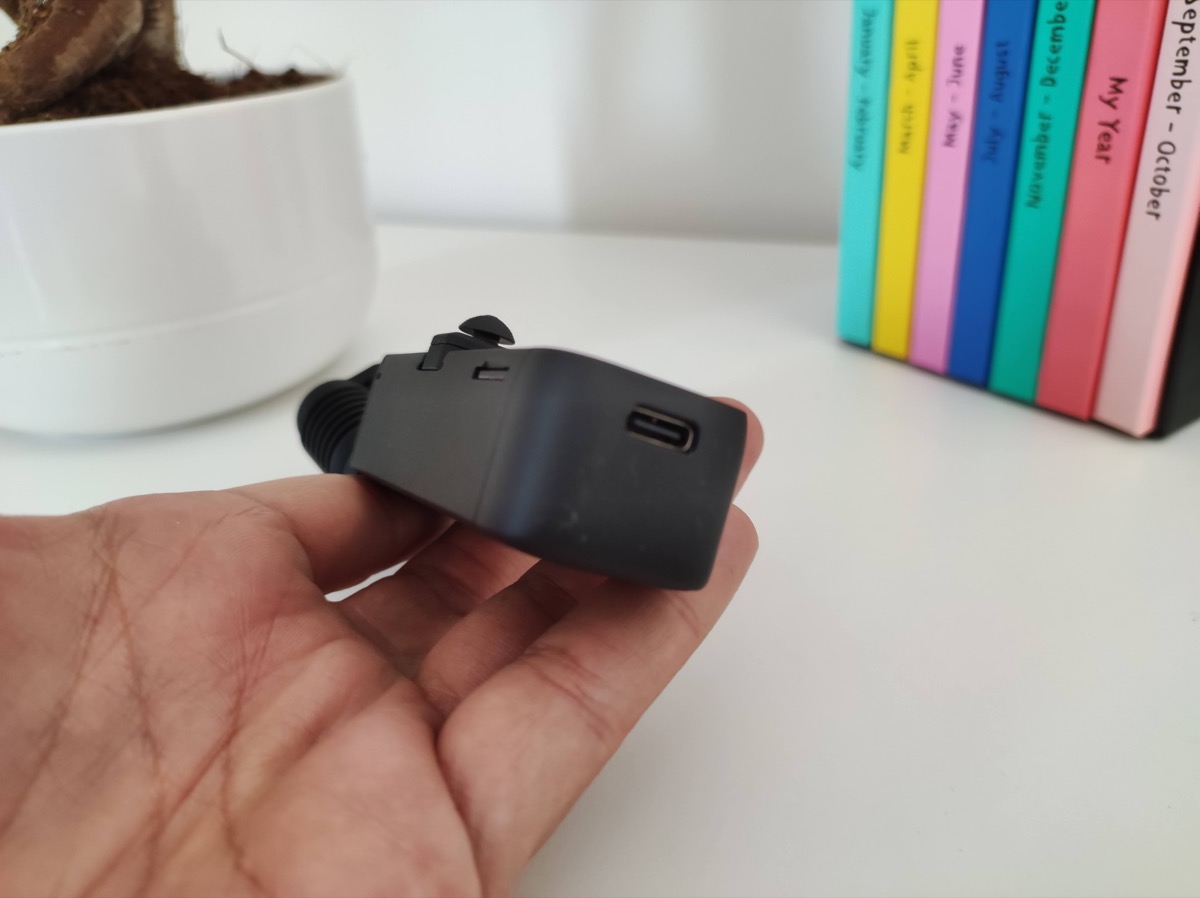
It must be said that, alternatively, it is possible to connect the smartphone using the adapter included in the package, even if in reality this choice has “pros” and “cons”. First of all, to connect the smartphone to the gimbal it is necessary to give up a comfortable analog stick, which will allow greater freedom of movement of the camera. The smartphone coupling system, in fact, requires the removal of the stick. Furthermore, considering the current average size of a smartphone, the whole set will be significantly heavier, making it even more difficult to grip. Imagining using the smartphone for long shots is a bit difficult. 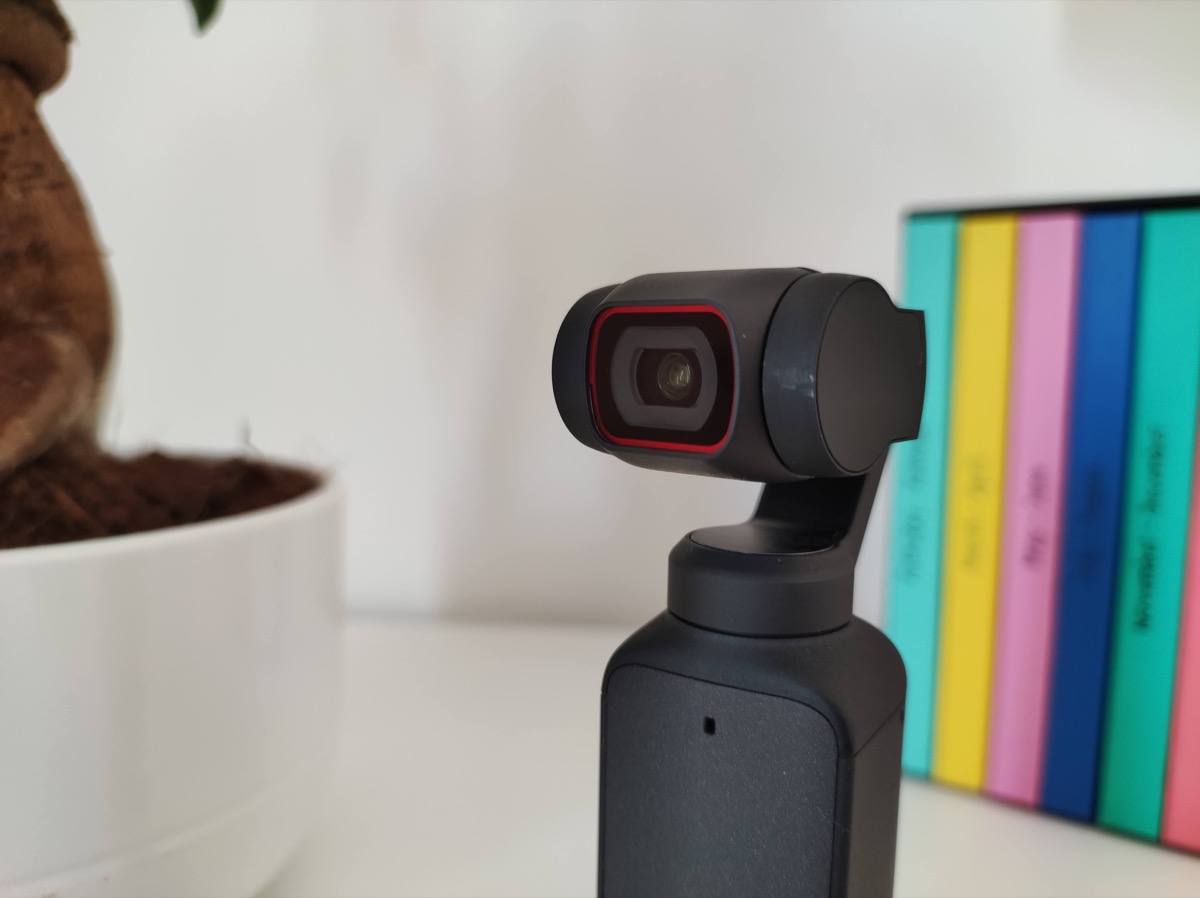
It must be said that, by connecting the smartphone, you will have more shooting options, to be controlled through the DJI Mimo app , which offers different modes, such as those of automatic creation, which are not present if the DJI Pocket 2 is used as a stand alone camera. 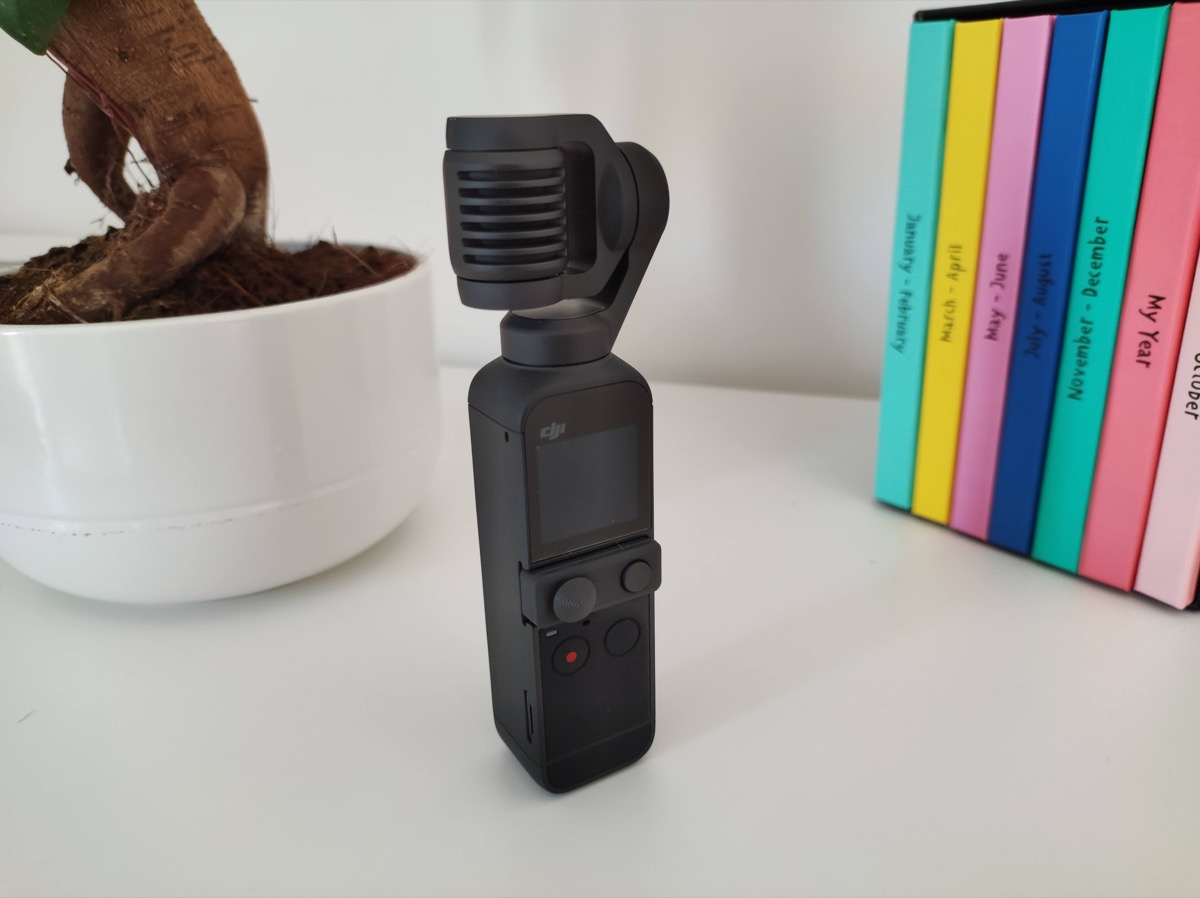
Just below the screen are the buttons for recording and managing modes, being able to quickly switch between photos and videos, or activate the function to center the sensor or switch to selfie mode. The power button is located on the side, but it is always possible to turn on the gimbal via the front mode select button. To turn it off, however, you will need to switch from the side button. The ignition, however, is really lightning fast, and in a few seconds the gimbal will be ready for recording. 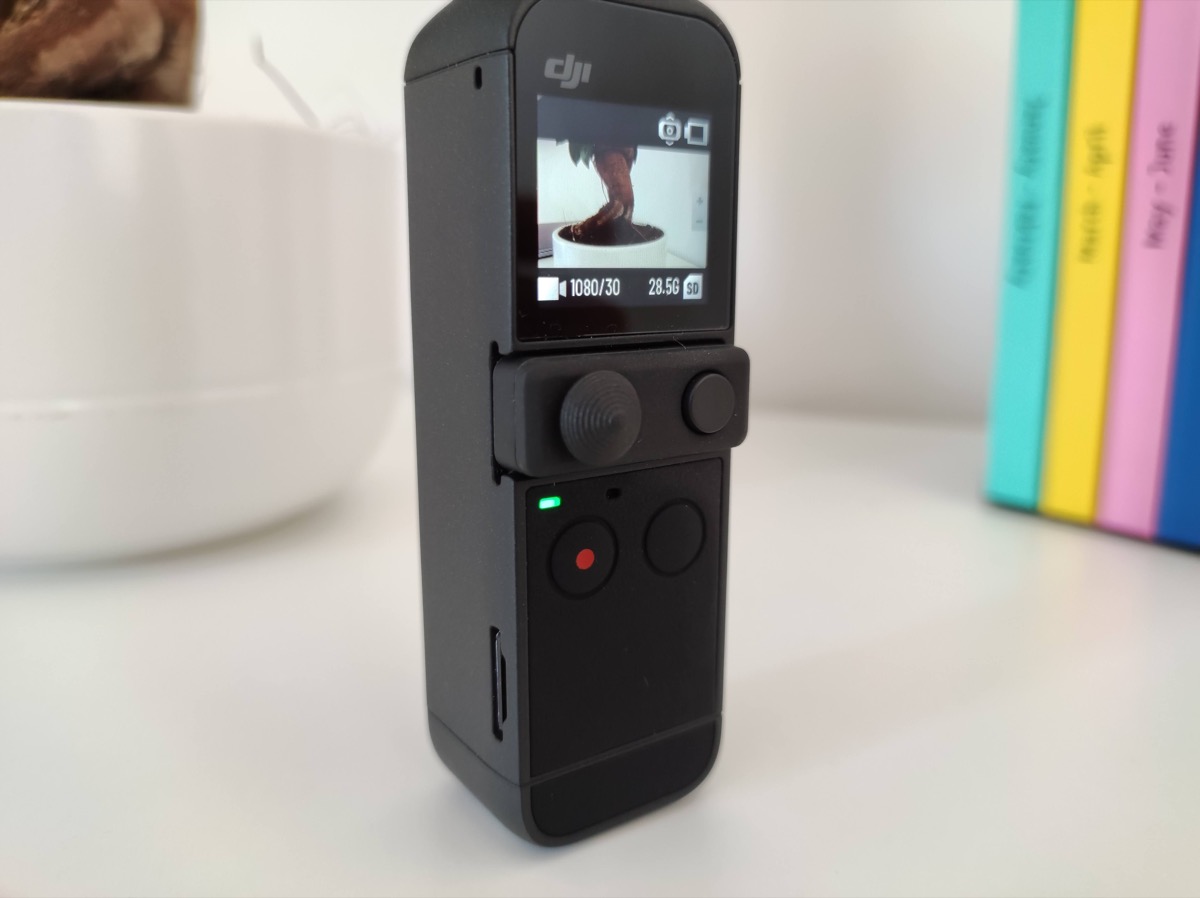
In the package there is also a kind of rigid plastic holster, which serves as a carrying case. Truly original and unusual, it fits perfectly to the device, and protects it from any bumps when you carry it with you.
Image quality
When it comes to image quality, DJI stumbles on the same spot as most smartphones of any range do, namely when recording in low light conditions. 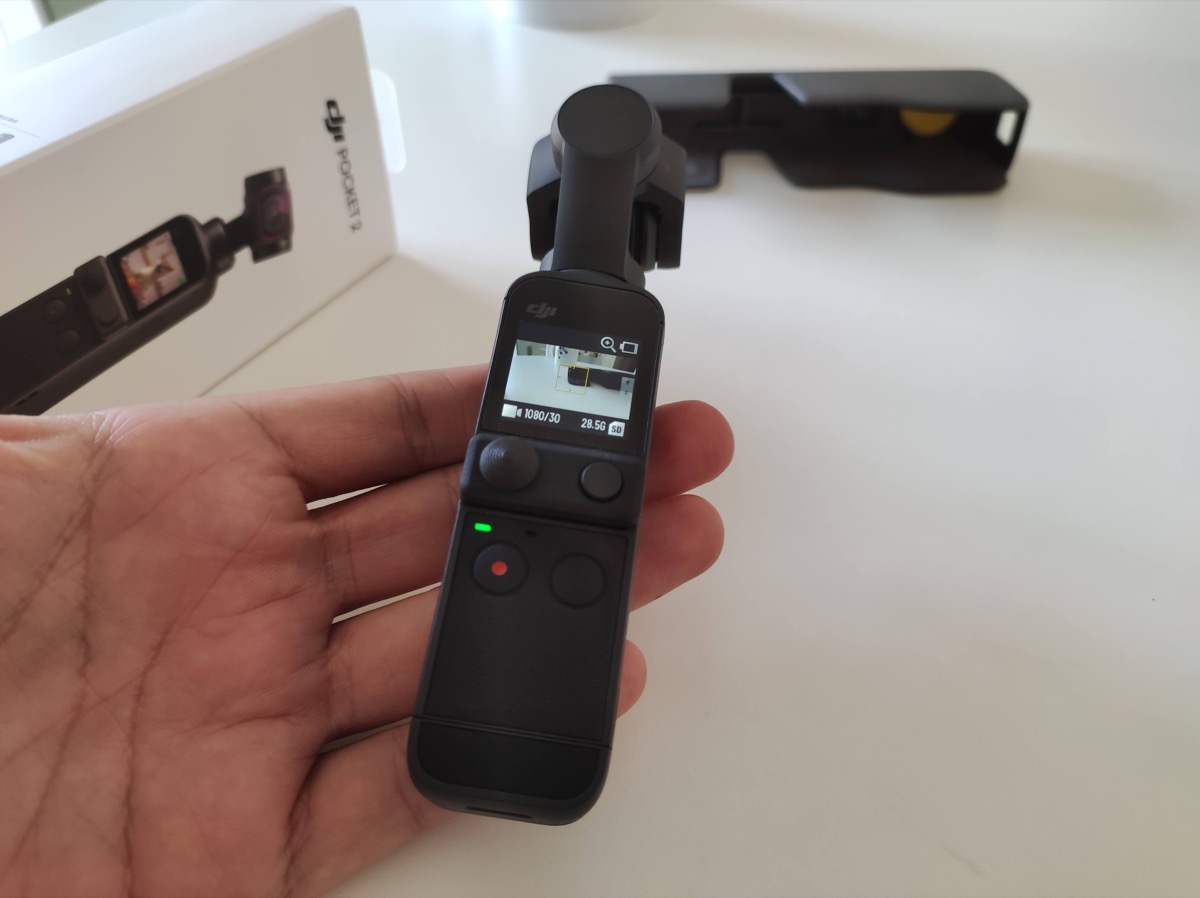
The 1 / 1.7-inch 64MP sensor shoots at up to 4K / 60fps, a marked improvement over the Osmo Pocket. It records 4K video at 60 fps at 100 Mbps, and offers HDR video. Note that Pocket 2 has a self-tracking function, which is why it is absolutely suitable for vlogging. Just put the camera on a tripod, let yourself be framed and that's it: DJI Pocket 2 will follow you even if you move around the room -.
Image quality is absolutely good, as long as you record in good lighting conditions. Pocket 2 seems to suffer from noise management and handling of high contrast environments. In the dark , or even during the acquisition of dark objects, a slight grain is visible, while when the sensor collides with strong lights the focus may have some slight difficulties. 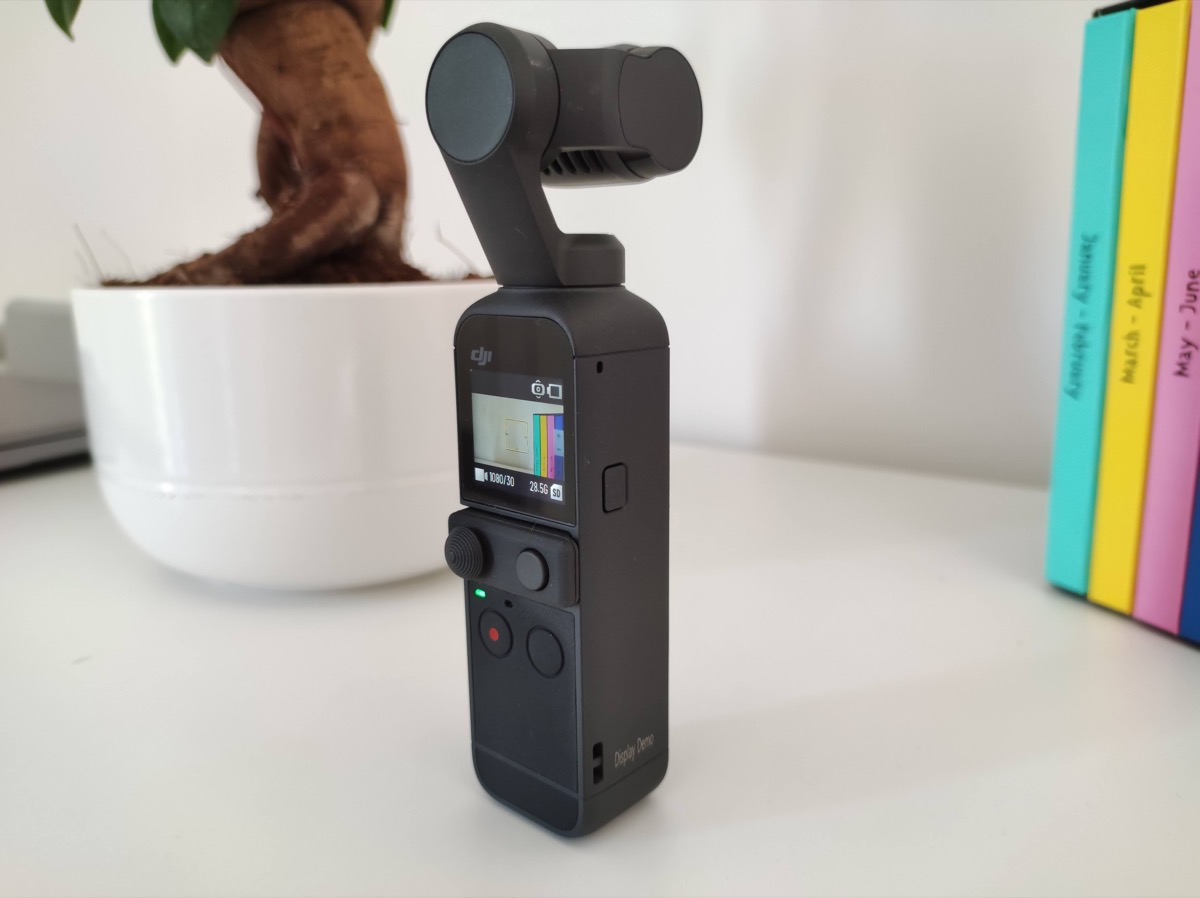
It must be said that Pocket 2 offers access to the “Pro” controls, so you can tinker with shutter speed, EV, focus mode and ISO from 100 to 6400. These controls are also accessible without the aid. smartphone, even if the app makes the experience less complicated. 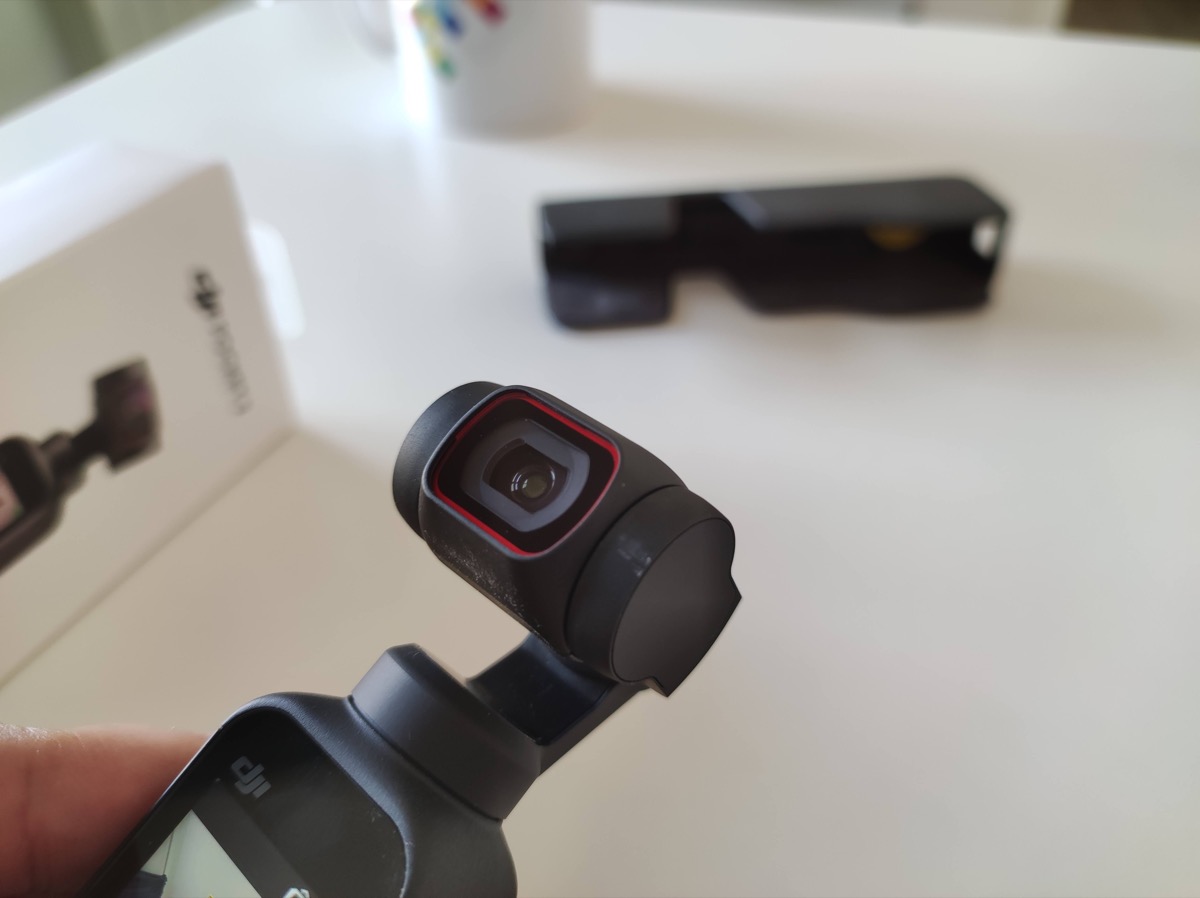
Also new is the ability to adjust focus speed and pause recordings, making it even more of an optimized tool for content creators.
The Pocket 2 captures skin tones brilliantly, while the level of stabilization is truly appreciable. In short, the spoken scenes shot with this gimbal are excellent. The sound quality also impresses positively, so that the gimbal is, once again, an optimal all in one tool for vloggers. 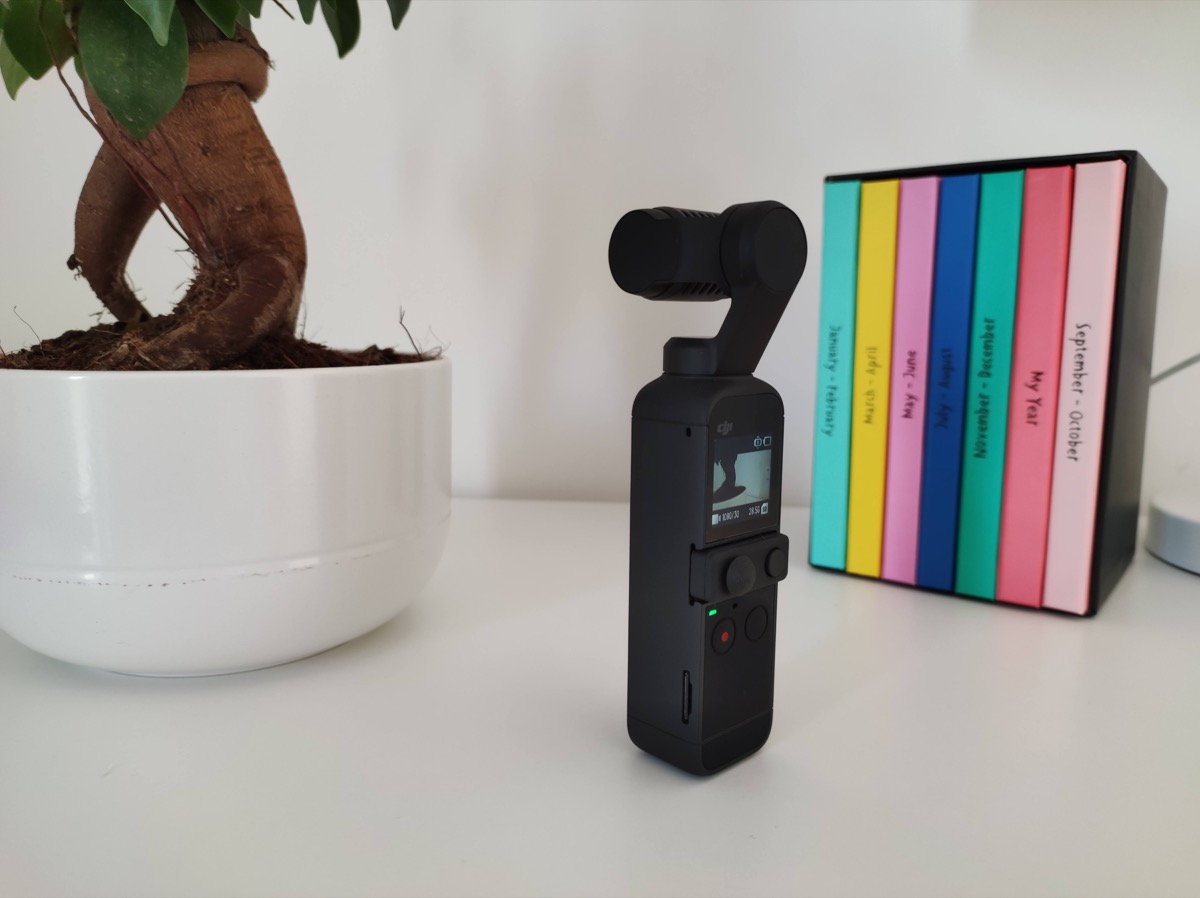
When it comes to taking pictures, if you're using a recent top-of-the-line phone, the odds are it will do a better job. It is also true, however, that a high-end smartphone can cost three times the DJI Pocket 2.
Recording mode
There are three main ways of recording. The Follow one where the camera remains horizontal, the Tilt locked, with up / down rotation disabled, and the FPV mode, where in essence you get a full range of motion. Note that, in the absence of a smartphone connected, it is possible to use the stick present in the package, which allows you to move the camera eye more freely.
Autonomy and storage
The non-removable Gimbal battery is 875 mAh . It is quite small, but so is the gimbal screen, which is why the autonomy is good. If you record in standard 4K quality or 1080p resolution, the DJI Pocket 2 can go on for about two hours of recording. Note that it can also record when plugged into a power source. 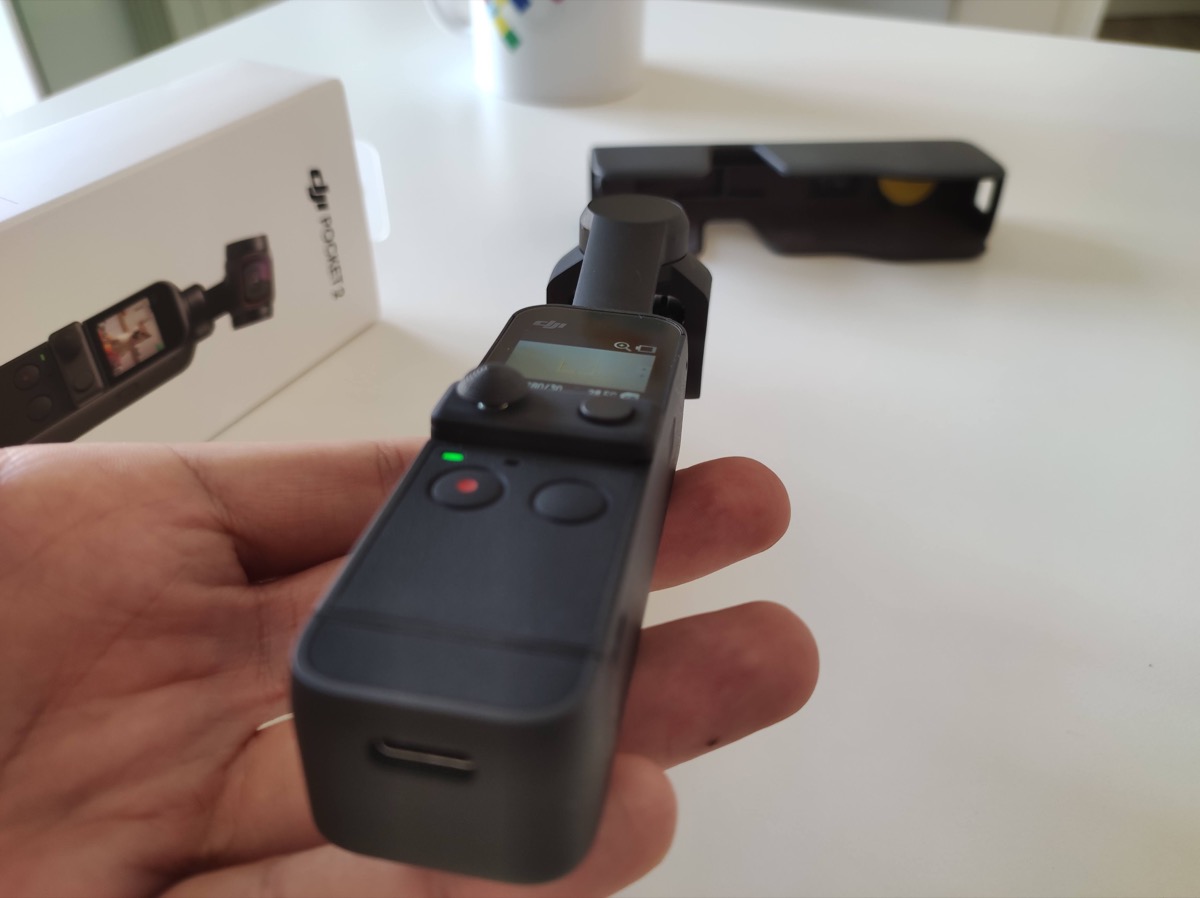
As for storage, the camera requires a rather large microSD card. If you are a 4K lover, be aware that five minutes could take up more than 3GB. And then, if you want to make the most of it, you will probably need 256 GB memory, which is the maximum allowed.
Conclusions
The DJI Pocket 2 is the perfect solution for all listening vloggers and content creators. It is not a “machine” for professional use, but its small size makes it extremely useful and versatile in a thousand situations. You won't notice how small and handy it is until you have it in your hand. The increase in sensor size over its predecessor is an absolutely welcome upgrade, so another highlight is object tracking. It is a fantastic and extremely portable tool that can benefit a videographer or vlogger who does not want to carry around much more cumbersome and expensive equipment.
PRO
AGAINST
Prices and availability
DJI Pocket 2, available in black or white, is distributed by Nital and can be purchased at a list price of 379 euros.





